admin
Staff member
Buy Engine Ice on RevZilla

Buy on RevZilla
Engine Ice Coolant is used in racing cars, bikes, and any other vehicle that is liquid-cooled. Some argue it’s overpriced snake oil while many insist it’s magic in a bottle. This review looks at that question and answers based on performance in a 2019 KTM 790 Adventure.
The accompanying video shows a step by step tutorial on how to drain, flush, and fill the motorcycle cooling system as well.
Video Review + Engine Flush How-To
Installing and Testing Engine Ice Coolant
Installing and Testing Engine Ice Coolant
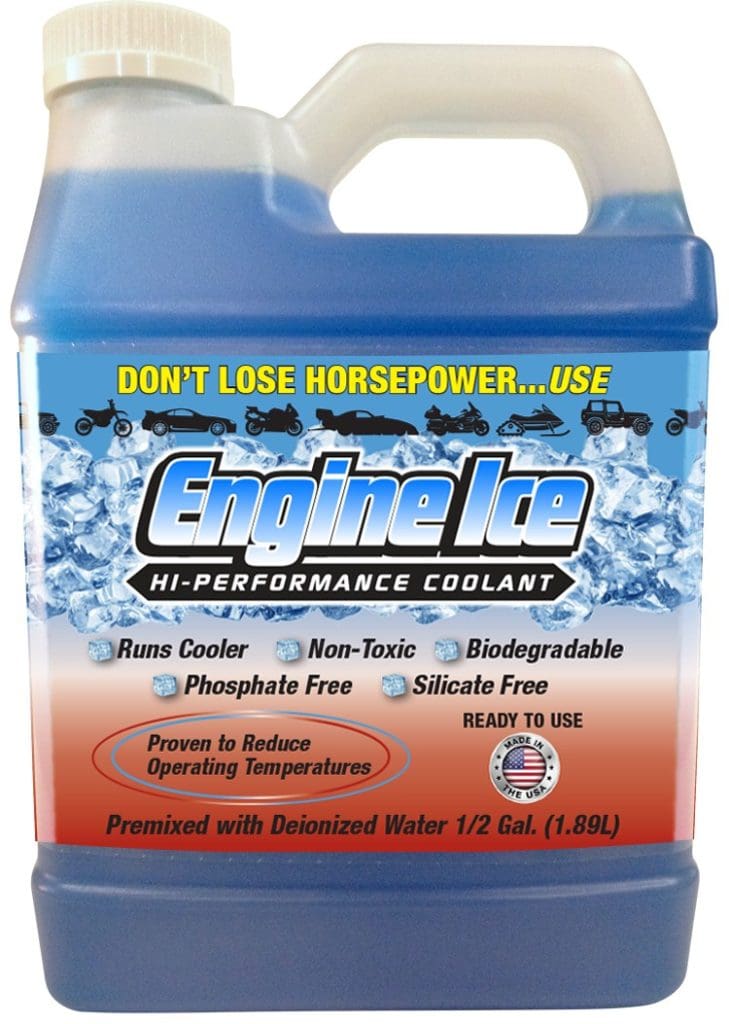
Curiosity Cooled My Engine
Does Engine Ice actually work the way the manufacturer claims?
Ask a dozen people and you’ll get many different answers to that question. Most people are solidly camped at either the love it or hate it end of the spectrum. I’m predictably somewhere in the middle.
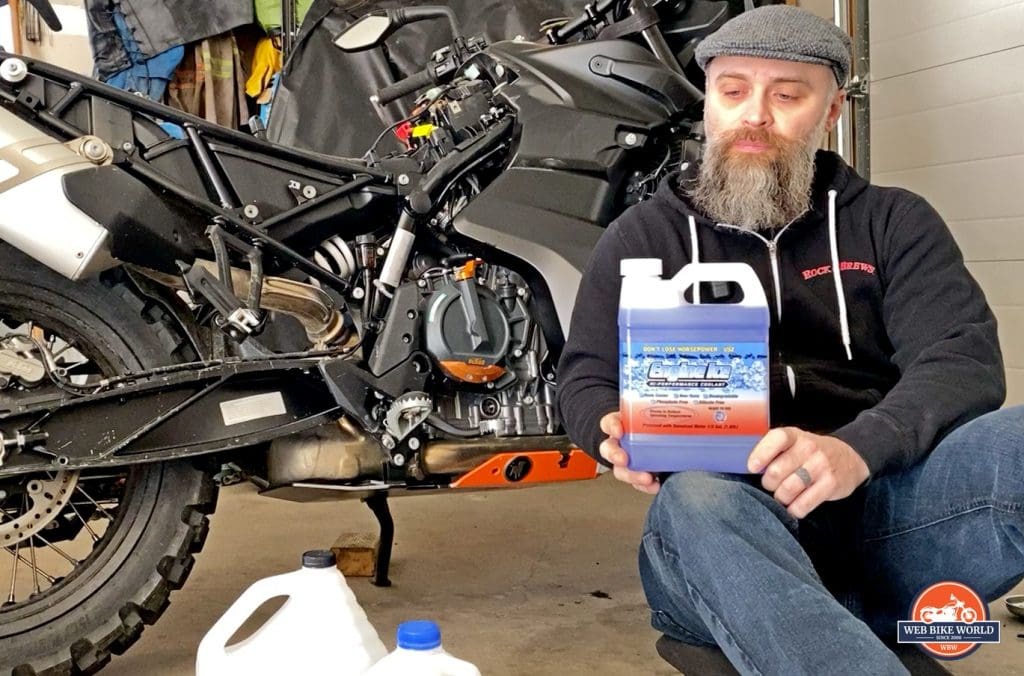
From me you’ll get the following point of view:
Yes, it seems to be working in my 2019 KTM 790 Adventure as they claim… for the most part. Will I continue running it after my testing is complete?
I’m still deciding.
Thank You Scott Lukaitis!
Scott (Chief Operating Officer of Engine Ice) responded personally to my email inquiring about getting a free sample of coolant for the purpose of this review.
He made it happen quickly at no charge to me and I appreciate the opportunity to play mad scientist.
He also CC’ed David Kimmey (President of Engine Ice) on one of my emails to answer follow up questions about their product. It’s impressive to me how passionately involved the top two executives are about… well… coolant!
Who am I kidding? I’m passionate about it too.
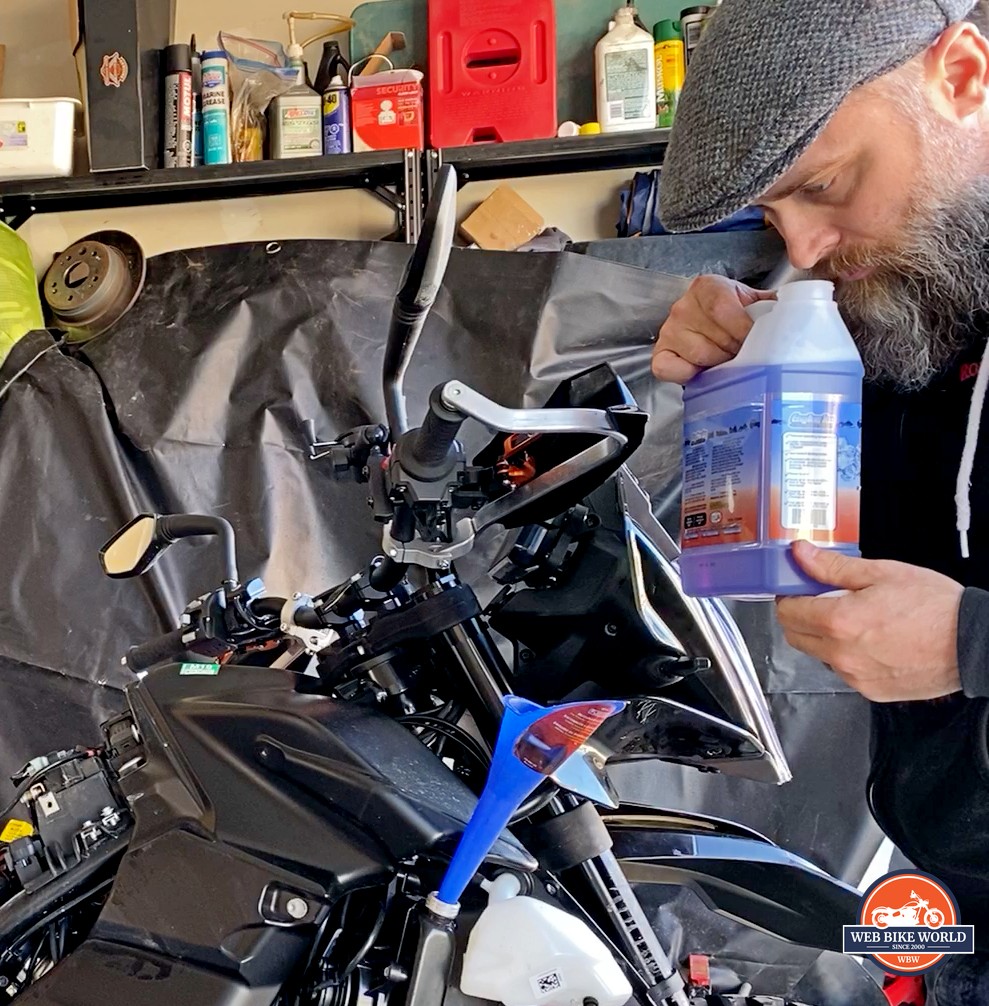
“Nope… it doesn’t smell like blueberry kool-aid.”
Specific Claims Made By Engine Ice
“Right out of the bottle” Engine Ice Hi-Performance Coolant is ready to provide you with dependable horsepower and is proven to reduce operating temperatures (10-15 degrees on average). The key to horsepower is not losing it! Engine Ice Hi-Performance Coolant is engineered to keep your operating temperatures at optimum performance to not lose power through excess heat.”
“Engine Ice Hi-Performance Coolant

Source: https://engineice.com/faqs/
- Can be used in any liquid-cooled engine
- SAE and ASTM rated and acceptable at racetracks
- Temperature range -26F to 256F or -32C to 124C
- Silicate/Phosphate free (ok to use in aluminum rads)
FAQ Video from Engine Ice President David Kimmey
The Testing Conditions
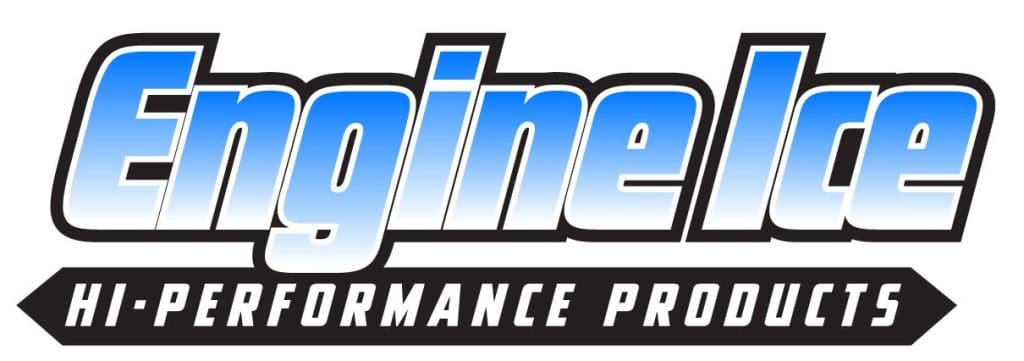
I first established a baseline reading using the OEM ethylene glycol in my 2019 790 adventure. This bike only has 8500kms (~5300miles) on it, is less than a year old, and has always run 3 bars on the temperature gauge even when running in very hot or cold weather.
This testing took place in my garage with an ambient temperature of 14 Celsius or 57F.
OEM Ethylene Glycol Coolant Results
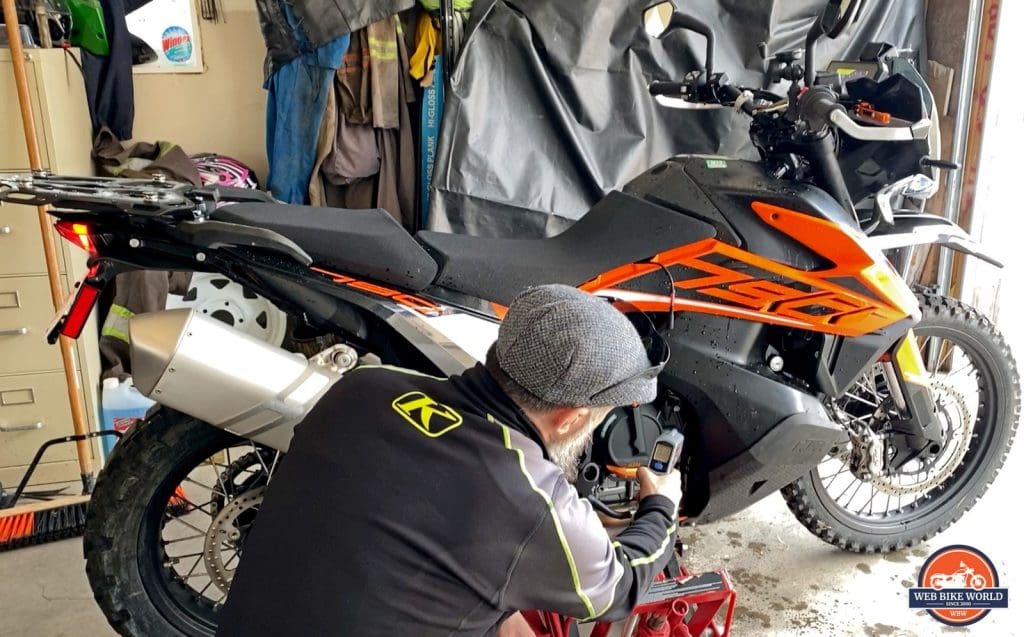
11 minutes after starting the bike and letting it idle the engine block temperature hit 165F and the cooling fan came on for about 30 seconds. It tends to only drop 10 to 15F before kicking off the fan and letting the temperature come up again to 164 or 165F. The rise and fall of the temperature is predictable, smooth, and steady like clockwork.
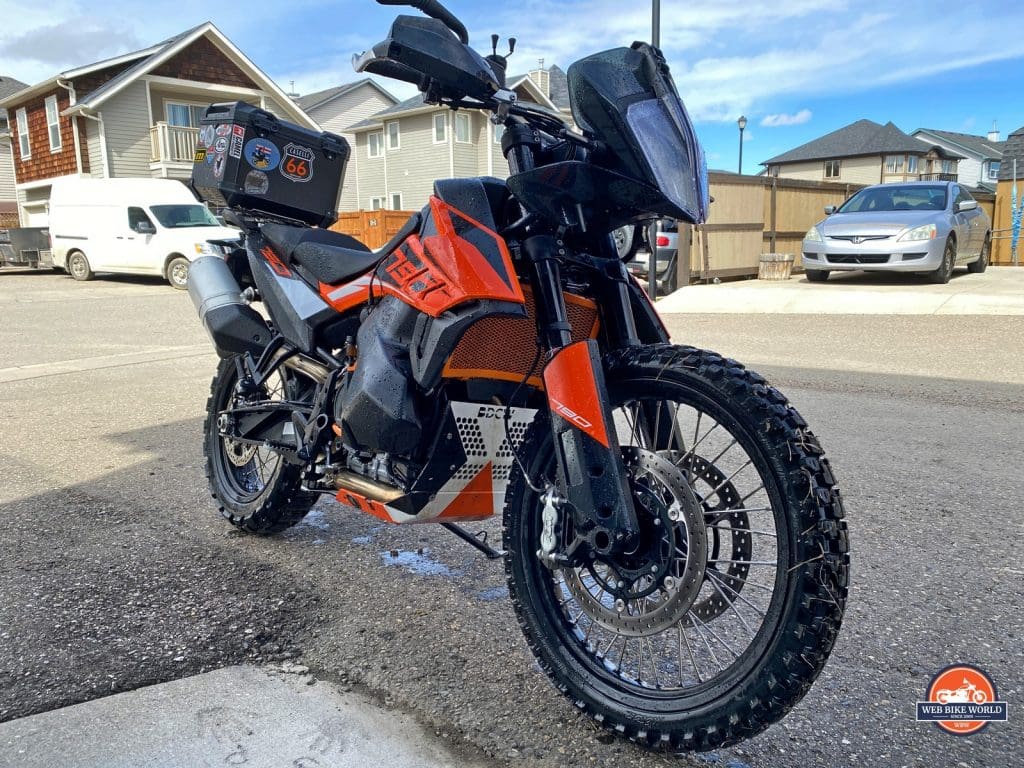
KTM motorcycles are notorious for running hot. My former 1190 Adventure with its LC8 V-twin engine certainly didn’t need a heated seat for that reason but I’ve not noted that with the LC8C inline twin engine in my 790. The 790 tends to run hottest when left idling in the garage with no airflow. That’s why I choose to base my review primarily on the numbers measured in that situation.
Out on the road, there are too many variables to account for and my dash doesn’t have a numbered temperature readout, unfortunately.
Engine Ice Coolant Installation
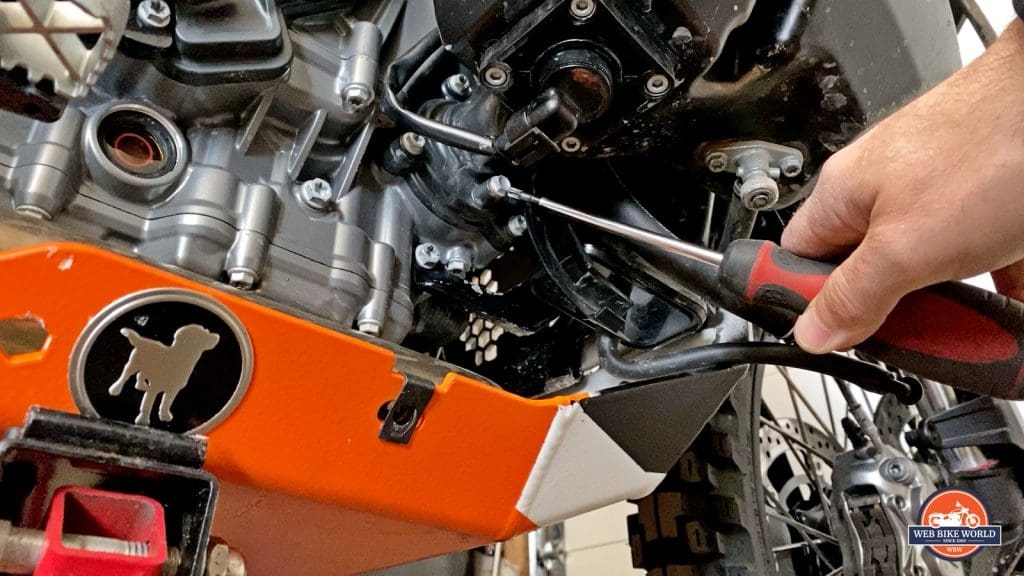
I drained the factory coolant then flushed the engine with a recommended 50/50 mixture of distilled water and white vinegar in preparation for the Engine Ice. I also flushed it a second time with distilled water alone after dropping the vinegar solution.
A lot of work, but worth it to avoid skewing the results.
Engine Ice Propylene Glycol Coolant Results
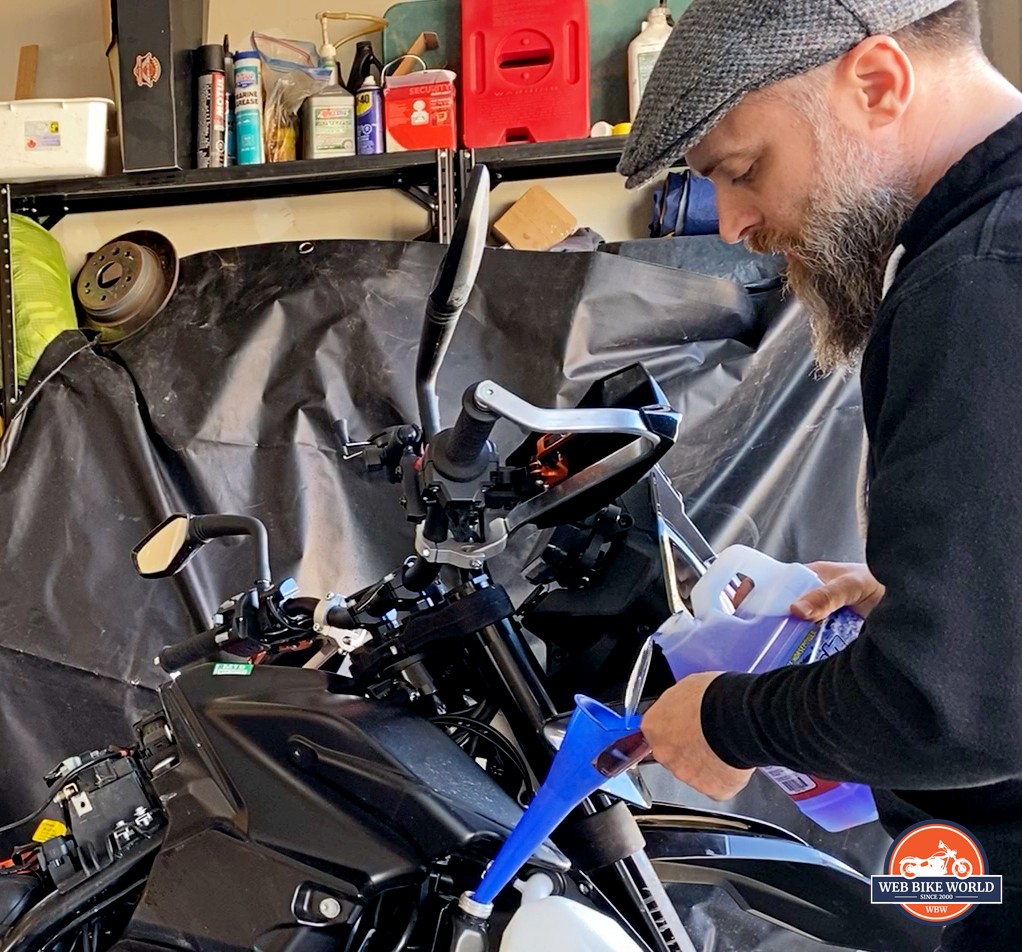
17 minutes and 35 seconds after starting the bike and letting it idle, the fan finally came on briefly (~15 to 20 seconds) at 157 degrees Fahrenheit. A significant 6 minutes and 35 seconds later than before with the OEM coolant in the bike and about 7 degrees lower.
Before the fan came on, the engine temperature seemed to stall its ascent at 155 F for many, many minutes instead of climbing steadily as with the OEM coolant.
Why did the fan come on seemingly at a lower temperature with the Engine Ice? It’s because the temperature began fluctuating dramatically after lingering at 155F. It likely jumped so fast from 155 F to 165F or above that my temperature gun didn’t register it (or I didn’t notice).
The fan’s cooling effect on the engine temperature appeared more pronounced while it was active with the Engine Ice installed. Temperatures were challenging to read on my temp gun because they ranged from 157 F down to 130 F at times and everywhere in between. It was difficult to figure out what exactly was going on, to be honest.
The long and short of it remains that Engine Ice coolant appears to run cooler on average and shed heat faster once the fan comes on for shorter spells.
The Critics Rage
Critics of Engine Ice coolant tend to say that it didn’t have any effect on their bike or as in the case of this YouTuber (Tony Nameless) the performance is too erratic and only useful in racing applications where you run the engine hard constantly.
Heat Transfer Potential
I can see what he’s concerned about and according to any data I can find, Propylene Glycol based coolant (Engine Ice) doesn’t have the same degree of heat transfer potential that Ethylene Glycol based coolant does. That explains why the Engine Ice temperature was hard to measure clearly and how it tends to absorb and shed heat so dynamically. It seems to be constantly going through a change of state.
That doesn’t concern me personally because after spending several hours riding at slower speeds while off-road with my 790 in mud and gravel (in 78F temperatures) I didn’t notice anything unusual in the temperature gauge on my bike or signs of a boiling over cooling system. That’s not wickedly hot weather to be sure, but I think it counts.
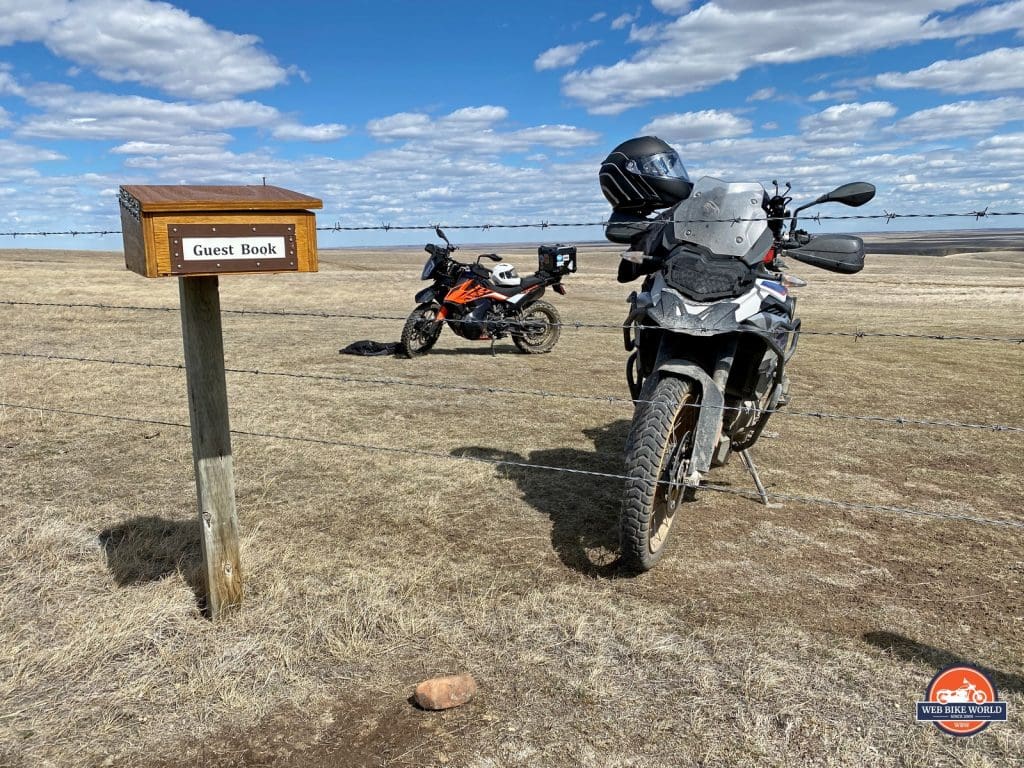
I couldn’t qualify claims of any effect on the bike’s power, but it already ran well before this. Perhaps I’m just not sensitive enough to notice?
My mechanical knowledge gained as a Heavy Duty Diesel mechanic tells me that optimally cooled engines produce more consistent power and that’s also an accepted fact in the industry. Of course optimal engine temperature is different in diesel engines than gas engines, but the same rule applies.
Other Haters
I suspect Engine Ice performs best in brand new motorcycles like my 790 that haven’t yet seen years of cooling system contamination buildup, missed maintenance, and neglect hamper their engine’s cooling potential. Even a good system flush can’t help with bent over radiator fins and road grime built up around the radiator core.
That and people who don’t competently flush and rinse out their engines probably degrade the ability of Engine Ice to manifest itself in their bikes the way it did in mine. Some people refuse to read or follow directions from manufacturers and inject their own opinion-based “knowledge” instead.
The Competition
Some people argue it’s far smarter to buy this Prestone Low Tox Propylene Glycol and mix it with Distilled Water instead of using Engine Ice. Engine Ice charges $23.95 for a ½ gallon while the Prestone is less than half of that.
Add to that the fact Engine Ice should be replaced every year according to the manufacturer. That’s at least twice as often as OEM coolant. Things are starting to get pricey, eh?
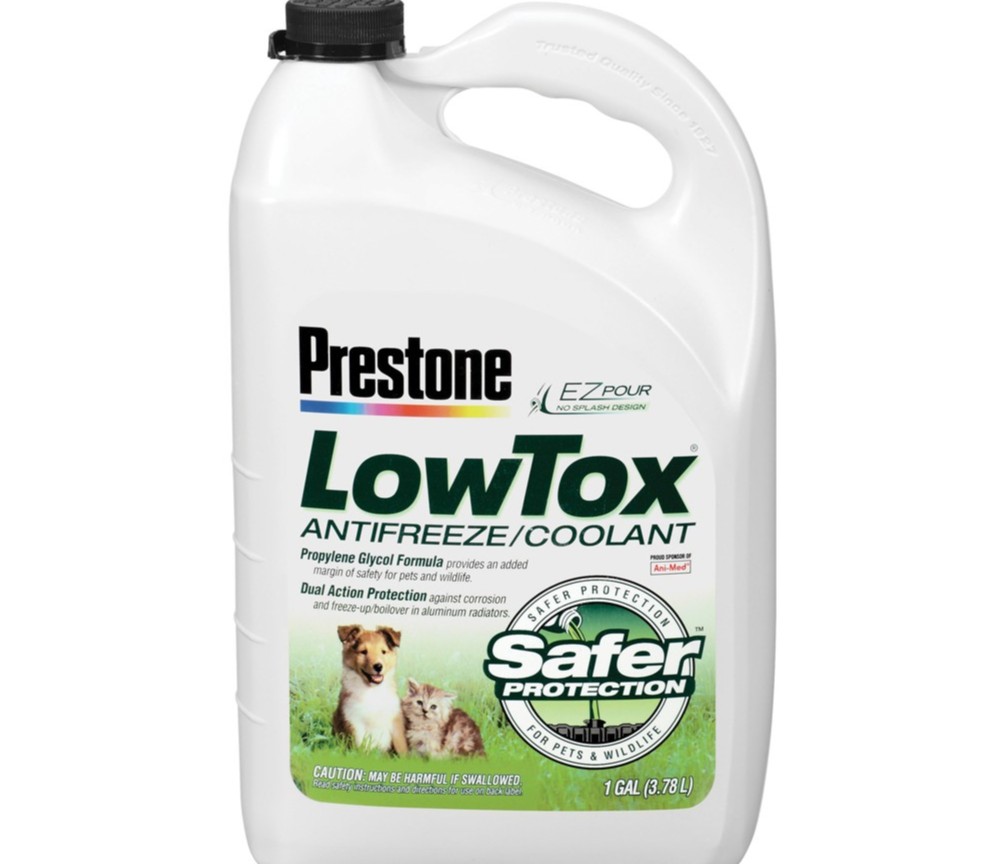
These detractors claim the Prestone product is the same and/or works just as well, but Scott and David predictably counter that there’s a lot more to their Engine Ice product than just Propylene Glycol and deionized water. David told me in his email:
“Jim, what makes Engine Ice perform better isn’t in the ingredients, it’s in the blending process. We have never claimed any type of “elfin’ magic” or super secret ingredients, the difference is in our proprietary blending process as well as the quality of the ingredients, even down to the quality of the water.”
Obviously they’re not going to explain the minutiae of their blending process to me, but this rings slightly fantastical in my head. It might not be “Elfin magic” but perhaps a sprinkling of David Copperfield is there?
In the same way I can’t figure out how Copperfield made the Statue of Liberty disappear, I can’t completely discount what he’s saying because the results are fairly conclusive for me thus far.
It’s Like Mixing A Soft Drink or Baking Bread?
Having said that if you’ve ever traveled overseas the way I have it’s interesting to note how a well-known fountain drink like Coca Cola sometimes doesn’t taste exactly the same there as here. I would guess this could be because of minor differences in the water content or maybe even the type of plumbing fixtures. The Coca Cola syrup might be the same anywhere, but different minerals and other deposits in the water can affect the mixture. I’ve heard the same thing about Guinness brewed in Ireland vs here, but can’t confirm.
Similarly, the multitude of different ways pastry or pasta dough is kneaded, folded, and allowed to rise can affect the final product noticeably.
Is that perhaps what David is alluding to? I’m just thinking out loud here.
It would be valuable to clearly address this claim by comparing these coolants in my KTM, and I might follow up this review with exactly that in April 2021 when I should change out this Engine Ice.
Final Verdict?
Engine Ice has been selling coolant for 20 years to racers, hobbyists, and everyday drivers for all manner of vehicles.
If the product really didn’t work in most engines I’m certain they would have gone out of business by now thanks to basic laws of business. You simply can’t fool enough people for so long. Just being colored a pretty shade of blue won’t convince the average Joe to shell out big dollars to buy it.
Engine Ice is based in Florida which I’m told gets quite warm all year. I would venture to say if it was developed and works there it’ll work anywhere.
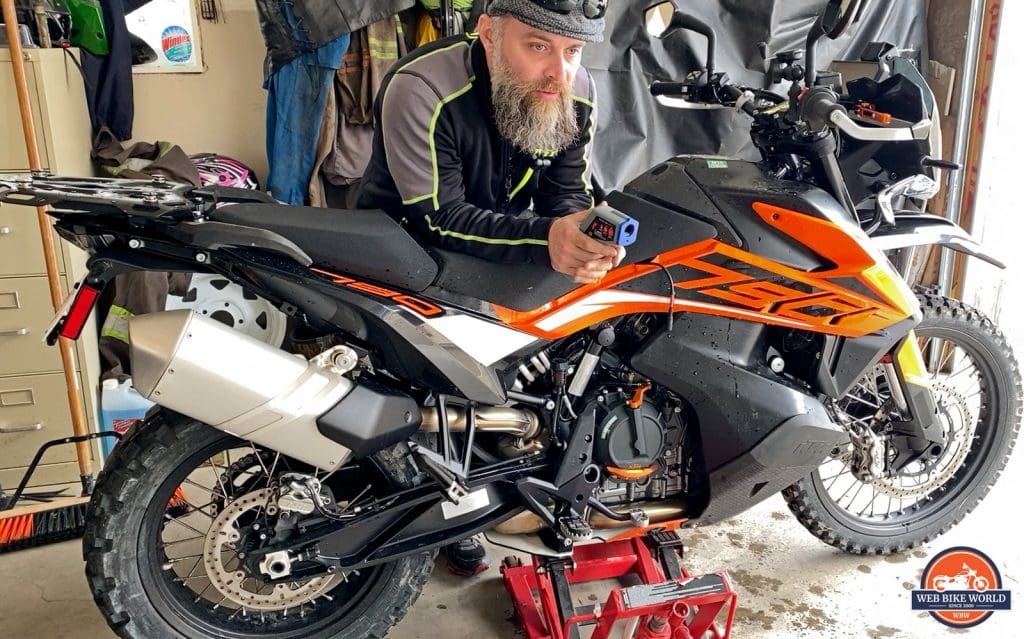
I plan on continuing to test the coolant the rest of this riding season and into the Spring of 2021 to better understand what I’m dealing with but at this point I think it’s a decent product. Comparatively more expensive than Prestone Low Tox perhaps, but less money than one like Evans Waterless Coolant.
The Evans formula does have a greater claimed temperature range (boiling point above 375F and -40F freezing protection) so perhaps it’s all relative to what performance you get?
I’ll share updates to this review if I make any profound discoveries over the next 12 months.
The Icing on the Cake!
They’ll mail you stickers if you send a self-addressed stamped legal size envelope to their HQ in Florida!
Buy Engine Ice on RevZilla

Buy on RevZilla
Pros
- Appears to live up to bold claims
- Boil-over protection up to 256º F and freeze protection to -26º F
- Safe to use in any liquid-cooled engine
- Excellent additive package to inhibit buildup in the cooling system
- Improved engine cooling at idle
- Cooler engines produce more stable power
- Biodegradable
- Considerably less toxic than Ethylene glycol
- Widely available
- Pre-mixed formula
- Sanctioned for official racing use worldwide
- 98.6% made in USA
- Inexpensive compared to some competitors
- Expensive compared to some competitors
- Need to flush engine before installation
- Engine temperature fluctuates quickly
- Recommended to change it yearly
- Shouldn’t be mixed with non-Engine Ice coolant
- Available only in ½ gallon or 5-gallon containers
- Results may vary?
Specs
- Manufacturer: CycleLogic Manufacturers
- Price when tested: $ 23.95 USD
- Made in: USA
- Review Date: April 24, 2020
Engine Ice Photo Gallery
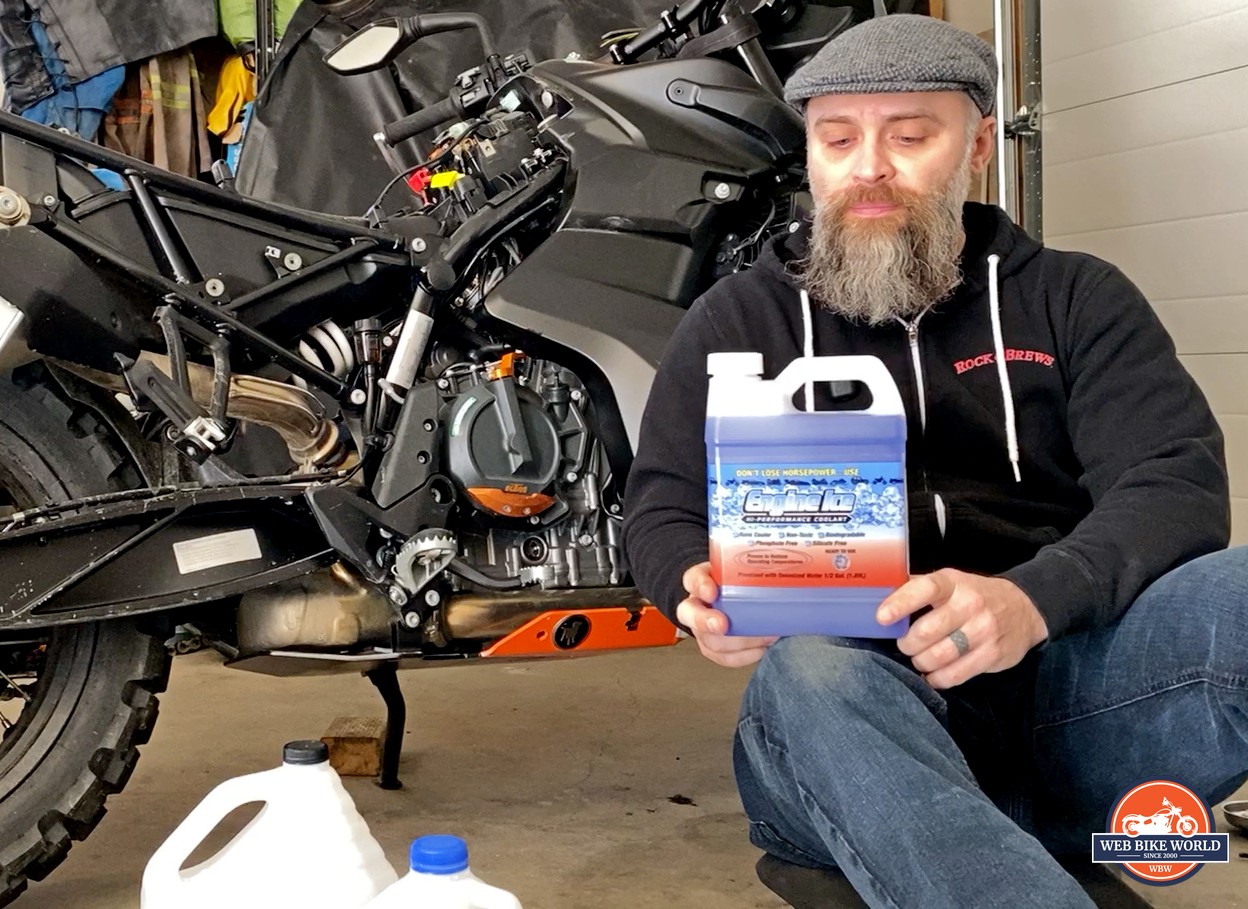
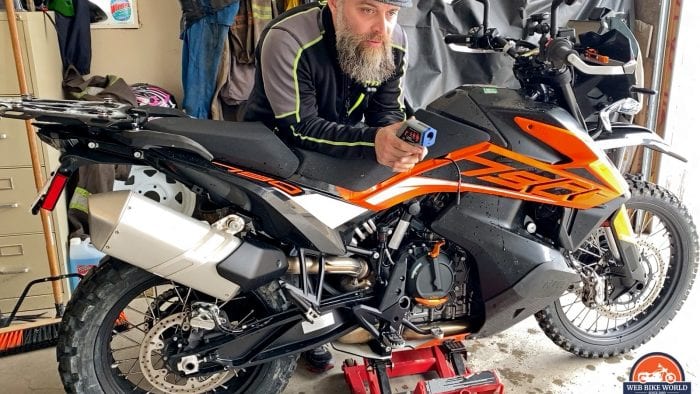
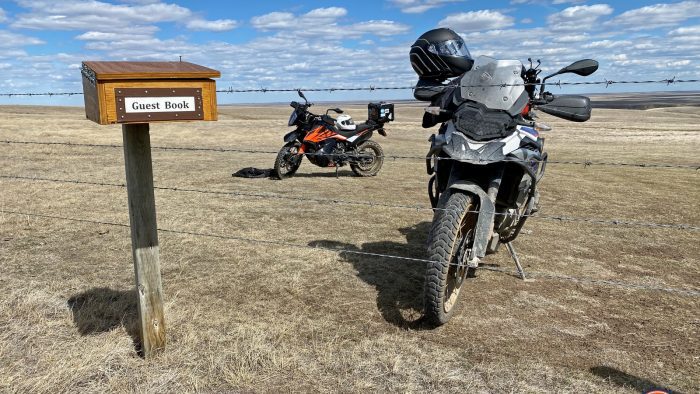

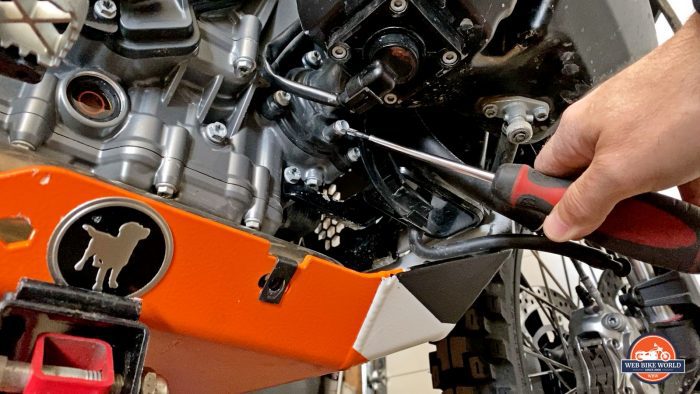
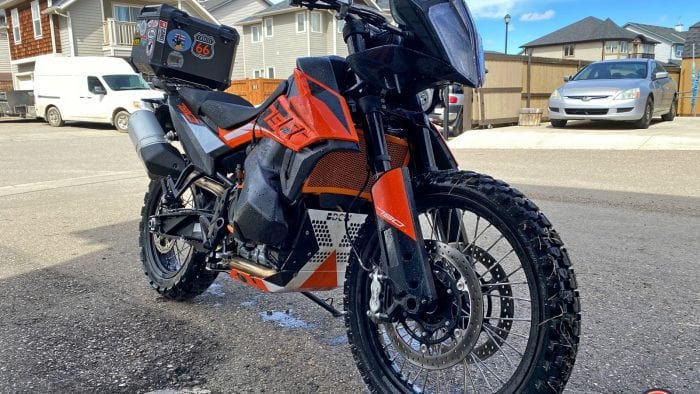
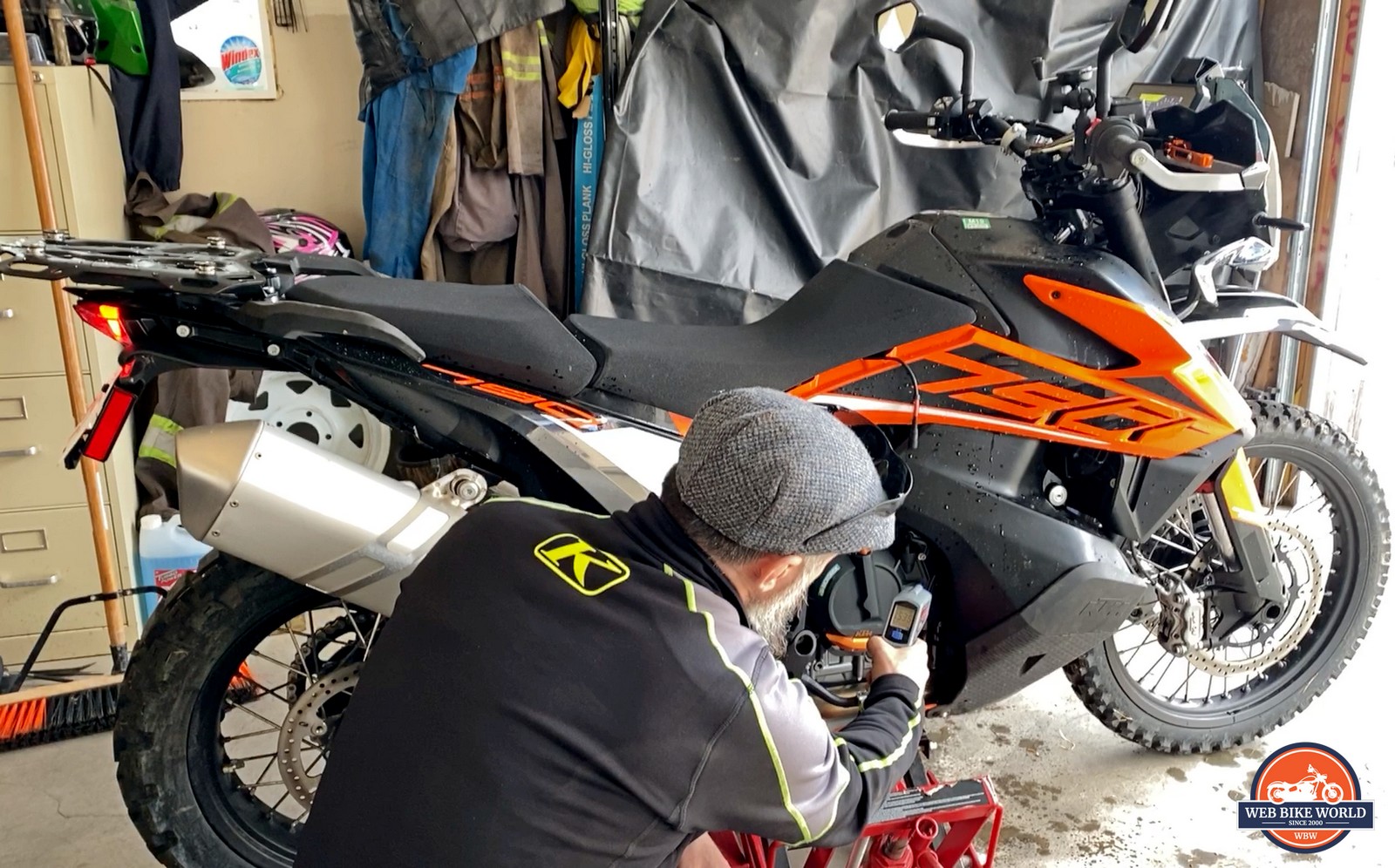
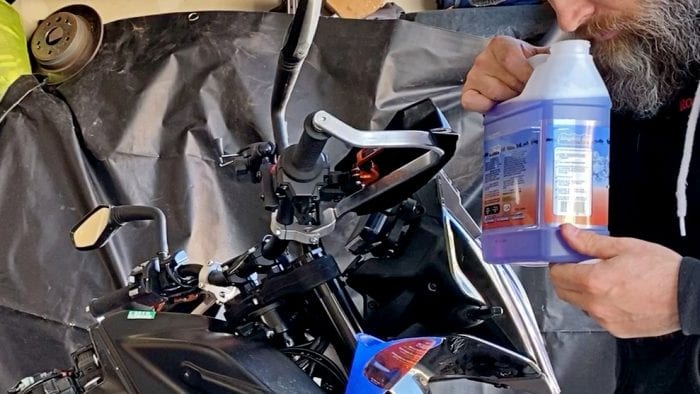
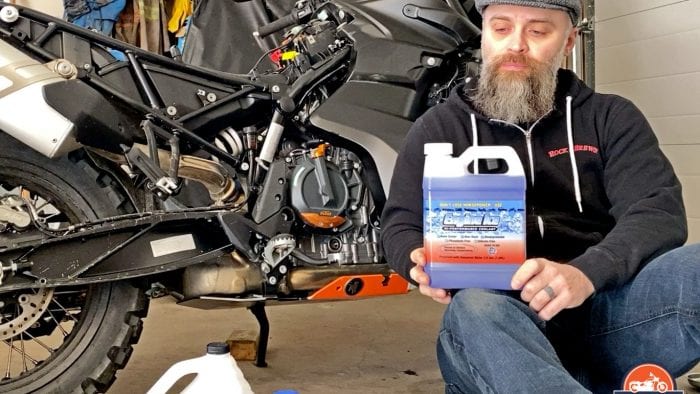
The post Engine Ice Hi-Performance Coolant Review appeared first on webBikeWorld.
Continue reading...


